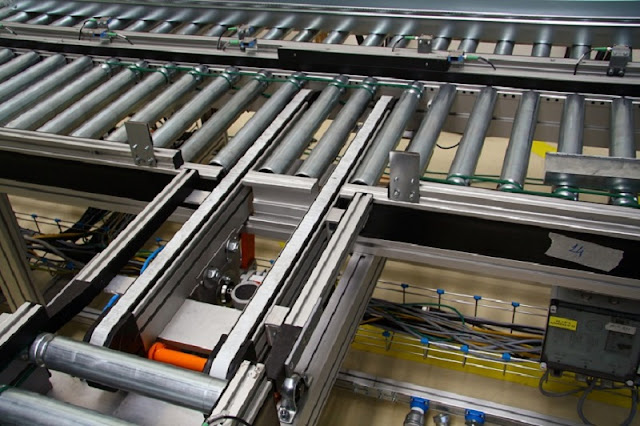It is a known fact that the conveyor system is common mechanical handling equipment designed to move materials from one location to another. Conveyors are mostly used in applications, which otherwise involve transporting bulky or heavy materials. These conveying systems will always allow efficient and quicker transportation for wider materials, making them quite popular in packaging and material handling industries. They might have some popular consumer applications as widely seen used in airports and supermarkets.
 |
| Conveying Systems |
There are multiple kinds of such conveying systems available and used as per different industries. Some of them even have chain conveyors, perfect for overhead and floor deliveries. These chain ones are known to have enclosed tracks, towline, I-Beam, free and power and hand pushed trolleys.
Reasons to use conveyors
There are multiple reasons for people to use conveying systems these days, mainly by the manufacturing engineers. These belts are perfect for moving products from one point to another and to reduce the movement of forklifts. Moreover, carrying items that are way too heavy is now an easy task with the conveyor belts.
- The same conveyor system will help move the product while operators are just working on it.
- Conveyor operation will present items to the robot for processing or to just receive items from a robot that has been processed.
- The best conveying systems can be used for storing items as well in between processes or at the final procedure step.
- For creating an accumulation bank or buffer, these systems are perfect for you. Here, you will enjoy a flexible storage system where the number of products in storage can prove to be higher or lower as needed to balance the process flow.
Types of conveying systems
It is high time for you to learn more about the types of conveyors before you can gladly choose the conveying systems matching your needs well. The market houses multiple types and it is time to get a glimpse of the major ones.
- The most common example is the belt conveyor, which is a material handling system. It is known to be using continuous belts for conveying items or materials. The belt is rather extended in an endless loop between two of the end pulleys, with either one or both ends with roll underneath.
- Roller conveyor is yet another option for you to consider. These conveying systems are known to use parallel rollers, as mounted in frames for conveying products manually or with help of gravity. Some of the major specifications will include axle center dimensions and roller diameter.
- You can try and get your hands for the belt conveyor or the apron. As understood from the name itself, these conveyors use slat or plates, primarily manufactured using wood, steel or other materials, which then get mounted on the roller chains for conveying items.
- The next stop for you to consider is the powered roller conveyors. Here, you have powered rollers, as mounted in frames for conveying items. Some of the key specifications will include roller diameter, material, drive type ad axle center dimension.
Industries as using a conveyor system
Conveyor systems are used across various industries and for so many reasons. Some of the common industries which are using conveying systems are automotive, mining, computer, agriculture, food processing, electronics, pharmaceutical, aerospace, bottling, chemical and print finishing to name a few. Even the packaging industry will not function properly for a single day without these systems. So, if you are addressing any of these industries, it is mandatory to check out the conveyors first, get to the types and features, before finalizing on the right choice to make.



0 Comments